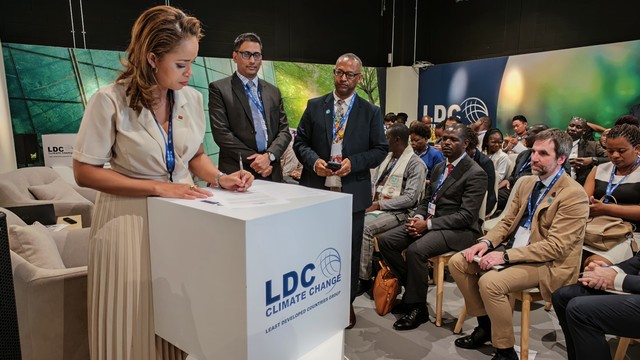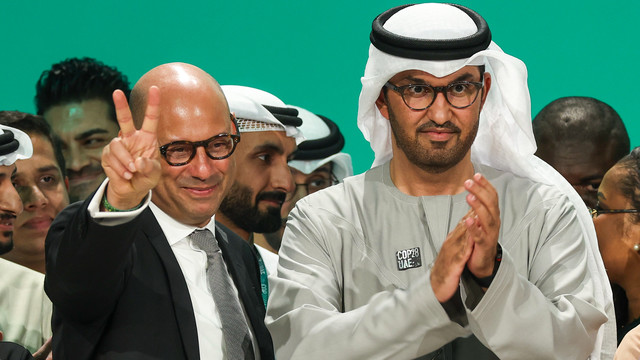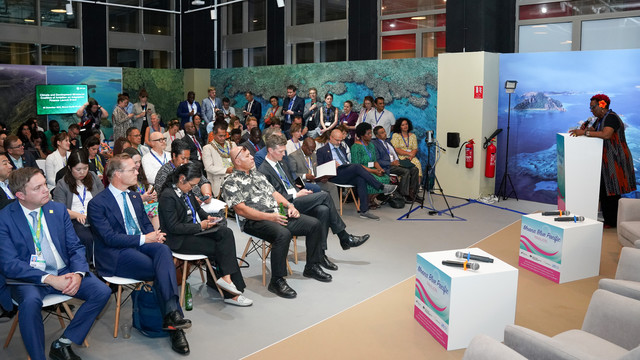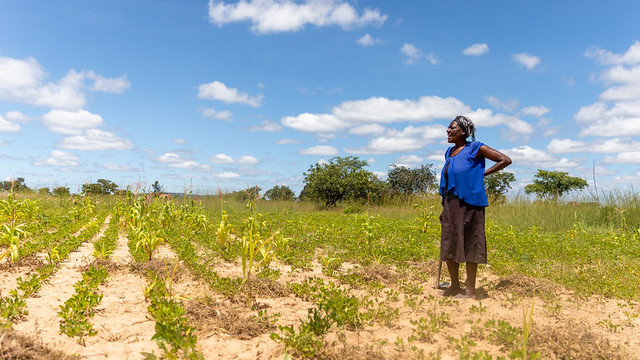Ambition to achieve gender balance at international climate negotiations must be matched with finance
Demands for equal representation of women at the UN climate negotiations are getting louder – but action plans to drive change need funding.


Women delegates at COP26 (Photo: COP26 via Flickr, CC BY-NC-ND 2.0 DEED)
Climate change is a global crisis that disproportionately affects women and girls due to factors including gender inequality, social norms and economic disparities.
Women in developing countries are more vulnerable to climate change and its impacts because of their high dependence on local natural resources for their livelihoods and those of the families they take care of. Climate change directly impacts many of the household duties and responsibilities typically taken on by women and girls – such as the provision of food, water and fuel for cooking.
Because of their role in communities, their higher likelihood to be affected by climate change, and wealth of knowledge and experience in how to adapt to and mitigate the impacts of climate change, women must be recognised as agents of change in building climate resilience through gender-responsive climate planning and actions.
Several international agreements and frameworks, including the Paris Agreement, the UNFCCC gender action plan (GAP), and the Sustainable Development Goals call for gender-responsive actions in climate negotiations.
This includes ensuring equal representation and participation of women and girls in climate decision-making at all levels; integrating gender equality and women's empowerment into all aspects of climate negotiations; and providing adequate funding for gender-responsive climate action.
Implementing the GAP at international and national level
Since 2001, efforts to address gender imbalances across UNFCCC processes have been steadily progressing, calling on parties to increase the representation of women in all positions in the UNFCCC and in party delegations, and committing to implementing decisions made during the negotiations.
At COP25 in 2019, the Lima work programme on gender (LWPG), and the related GAP was adopted with the aim of advancing gender equality and empowerment of women and girls in the UNFCCC process, and promoting gender-responsive action at national levels.
Specifically, this included engaging women in climate plans, programmes and projects; embedding visions, targets and goals on gender equity into national policies and development plans across all sectors; and ensuring that Nationally Determined Contributions (countries' climate action plans to cut emissions and adapt to climate impacts) and long-term strategies are gender-responsive.
Whereas there has been significant progress in improving representation, participation, integration, empowerment and overall gender equality, little climate finance is dedicated to supporting gender-responsive climate action.
The issues around insufficient resource is accentuated for poorer countries and particularly the least developed countries (LDCs). According to the OECD, only 2.4% of all climate-related official development assistance (PDF) is dedicated to gender equality as the principal objective. Less than 3% of adaptation funds for LDCs is allocated to supporting gender equality in climate change responses.
The importance of finance
In LDCs, the funding landscape falls short of adequately supporting projects that address both climate change and women's rights. This is also true for the financial mechanisms of the UNFCCC such as the Global Environment Facilty (GEF) and Green Climate Fund (GCF). A GEF evaluation showed that although integrating gender equality in funding proposals is a major requirement, gender is not incorporated in the implementation phase.
Without adequate funding, it will be impossible to achieve the goals of the Paris Agreement and the GAP.
Examples of how finance can support gender-responsive climate actions include:
- Providing women with access to microfinance loans to start or expand climate-resilient income-generating activities
- Funding women-led climate adaptation projects such as climate-smart agriculture
- Investing in climate-resilient infrastructure
- Supporting women's participation training and capacity building, and
- Raising awareness of the importance of gender-responsive climate action among all stakeholders.
More money to women
For women to participate in climate planning and actions at both the international and national levels, finance flows and access to finance must increase.
Finance is needed at international level to enable women delegates to attend negotiations and to support the effective implementation of actions in all negotiation streams. At national level, finance is essential for supporting the implementation of the GAPs of the LDCs.
More money can be dedicated and channelled to women in the following ways;
- More direct climate finance to women and women organisations: accelerated efforts are needed to ensure that climate finance goes directly to women. This enables women to take the lead and put their knowledge into practice. COP28 is an opportunity to agree concrete actions for delivering direct financing that supports women who are most affected by climate change
- Make existing and incoming mechanisms gender-sensitive: President Biden's recent pledge to provide an additional US$1 billion to the GCF is an example of a positive step – but such a pledge needs to be complemented with a gender-inclusive implementation plan, ensuring that the funding reaches the women and communities most impacted by climate change
- Ensure the loss and damage fund is gender-responsive: the fund, established at COP27 and designed to provide financial assistance to developing countries to address losses and damages that cannot be avoided or adapted to, should be gender responsive and reach the women at the grassroots, and
- Address barriers to finance access: examples include simplifying grant application processes and reducing reporting requirements; targeted outreach to women to make them aware of funding opportunities; and providing support so women have the knowledge and skills to develop proposals and applications.
Women play a vital role in climate change adaptation and mitigation actions. Ensuring they have access to finance is essential for promoting gender-responsive climate action.
By investing in women's climate leadership and empowering women to take action on climate change, we can create a more just and sustainable future for all.
IIED is undertaking a study to examine the challenges women face in participating in the UN climate talks. The final research paper will be published in February 2024. Sign up if you would like to receive updates on the study findings.
Want to hear more from IIED? Each month we send out a newsletter with our latest news and publications. Find out more and sign up.
All information submitted in the above form is protected by our privacy policy.



